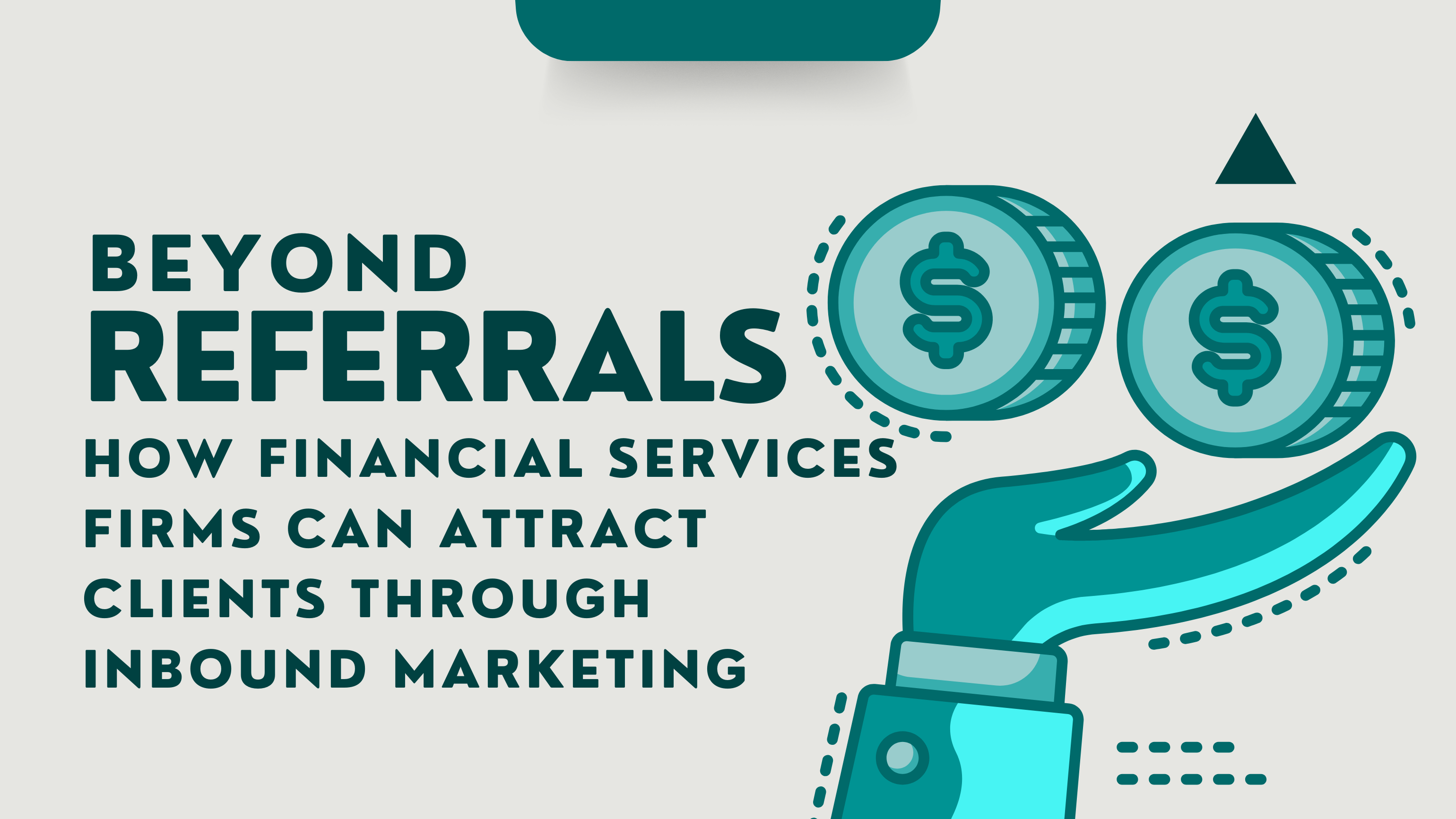Start your day knowing that your financial services firm isn’t merely waiting for referrals—it’s actively drawing in the ideal clients with a narrative that’s uniquely yours. Inbound marketing isn’t about chasing trends; it’s a strategic journey that transforms casual interest into enduring relationships, enabling you to showcase your expertise and insights to every potential client.
The Shift from Referrals to Inbound Success
While referrals have long been the foundation of client acquisition in financial services, they come with inherent limitations. A recent study by the Harvard Business Review found that firms relying solely on referrals risk stagnating their growth because they miss out on reaching a broader audience. In contrast, inbound marketing has been shown to generate up to 3 times more leads than traditional outbound methods (HubSpot). This dynamic approach allows you to take control of your narrative and continuously attract the right prospects.
Example:
Consider a mid-sized wealth management firm that once depended entirely on client referrals. After implementing an inbound strategy—including regular blog posts, webinars, and targeted SEO—the firm reported a 40% increase in qualified leads within one year, demonstrating the power of an inbound approach.
Key Inbound Marketing Strategies for Financial Services Firms
1. Craft Inspiring, Data-Driven Content
Quality content is the cornerstone of inbound marketing. Develop materials that not only educate but also inspire:
- Educational Articles: Break down complex topics such as retirement planning or investment strategies into digestible, actionable insights. For example, a blog post titled “5 Steps to Secure Your Financial Future” can demystify financial planning.
- Infographics & Videos: Visual content can simplify intricate financial data. Infographics highlighting market trends or video tutorials on portfolio management can engage a wide audience.
- Success Stories and Case Studies: Share detailed accounts of how your firm helped clients overcome financial challenges. This builds credibility and fosters trust.
Statistic: According to the Content Marketing Institute, companies that prioritize content marketing see 6 times higher conversion rates compared to those that don’t.
2. Leverage SEO to Enhance Your Visibility
Ensuring that your target audience finds you online is critical:
- Keyword Optimization: Identify financial keywords your ideal clients are searching for—such as “investment advice” or “financial planning strategies”—and incorporate them into your content.
- Local SEO: Optimize your website for local searches, making it easier for community members to find trusted advice in their area.
- Backlink Building: Partner with reputable financial publications to boost your site’s authority. Quality backlinks not only improve search rankings but also position your firm as an industry thought leader.
Statistic: A BrightEdge study reported that organic search drives 53% of website traffic, underscoring the importance of strong SEO tactics.
3. Engage Your Audience Through Social Media
Social media platforms offer a powerful avenue to build your community and amplify your success story:
- Thought Leadership Posts: Regularly share market insights, industry trends, and practical financial tips on LinkedIn and Twitter.
- Interactive Sessions: Host live Q&A sessions, webinars, or virtual roundtables where prospects can engage directly with your experts.
- Client Testimonials: Feature stories from satisfied clients to humanize your brand and build trust among new prospects.
Example:
A financial advisory firm that hosted monthly webinars on market trends saw its social media engagement triple within six months, resulting in a 25% increase in webinar sign-ups and a surge in inbound leads.
4. Cultivate Relationships with Targeted Email Campaigns
Email marketing remains one of the most effective channels for nurturing leads:
- Segmented Lists: Customize your messaging based on where prospects are in the client journey. Personalized emails improve engagement and foster loyalty.
- Drip Campaigns: Develop a series of automated emails that gradually educate and build trust. For instance, a drip campaign might start with basic financial literacy and gradually introduce more complex investment strategies.
- Clear Calls-to-Action: Ensure every email guides readers to take the next step—whether it’s scheduling a consultation or downloading a whitepaper.
Statistic: Research from Mailchimp indicates that targeted email campaigns can boost conversion rates by up to 50%.
A Blueprint for Your Inbound Marketing Journey
Step 1: Define Your Audience and Objectives
- Develop Buyer Personas: Understand who your ideal clients are, their financial goals, and their challenges. Detailed personas enable you to tailor content that truly resonates.
- Set Measurable Goals: Whether it’s increasing website traffic by 30% or doubling lead conversions, clear objectives will guide your strategy.
Step 2: Create a Comprehensive Content Calendar
- Plan Ahead: Map out a content schedule that aligns with your audience’s interests and addresses their pain points.
- Diverse Content Formats: Incorporate blogs, videos, infographics, and case studies to keep your audience engaged and informed.
Step 3: Optimize Your Digital Presence
- User-Friendly Website: Ensure your website is responsive, easy to navigate, and optimized for conversions. A streamlined user experience is key to capturing leads.
- Conversion-Focused Landing Pages: Design pages that clearly communicate your value proposition and include compelling calls-to-action.
Step 4: Amplify Your Reach
- Social Media Promotion: Leverage your social networks and invest in targeted ads to ensure your content reaches the right audience.
- Influencer Collaborations: Partner with industry experts and thought leaders to extend your reach and enhance your credibility.
Step 5: Monitor, Measure, and Adjust
- Analytics Tools: Use tools like Google Analytics and CRM systems to track key performance indicators such as website traffic, lead conversion rates, and email engagement.
- Continuous Improvement: Regularly review your campaign performance and adjust your strategy to ensure ongoing success.
Your Success Story Begins Today
Inbound marketing offers a pathway to build a financial services firm that not only survives but thrives. By developing high-quality, data-driven content, optimizing your online presence, and engaging your audience through multiple channels, you set the stage for a transformative growth journey.
Your firm’s success story is waiting to be written—where every piece of content and every client interaction is a step towards lasting financial excellence. Embrace the inbound marketing approach, backed by powerful statistics and proven examples, and watch your business evolve into a trusted industry leader.
Are you ready to begin your journey beyond referrals?




